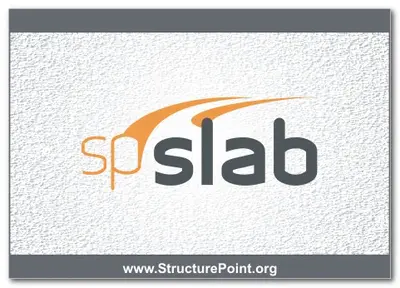StructurePoint spSlab 5.00
Powered by the Equivalent Frame Method of analysis and design per latest American (ACI 318-14) and Canadian (CSA A23.3-14), spSlab v5.00 is widely used for analysis, design, and investigation of two-way slab systems (including waffle and slab bands), beams, and one-way slab systems (including standard and wide module joist systems.
spSlab, formerly pcaSlab and ADOSS, is used for new designs or investigation of existing structural members subject to flexure, shear, and torsion (equilibrium, or compatibility). With capacity to integrate up to 20 spans and two cantilevers of a wide variety of floor system types, spSlab is equipped to provide cost-effective, accurate, and fast solutions to engineering challenges. spSlab calculates one-way (beam) and two-way (punching) shear around columns and drop panels, immediate and long term deflection.
Using the moment redistribution feature reduces negative moments by up to 20% and reduces reinforcement congestions over the supports to ultimately save in both material and labor.
spSlab also incorporates torsion into shear design and investigation of beam systems. Shear capacity including torsion is represented in terms of required and provided area of transverse and longitudinal reinforcement.

Operating System: Windows Vista SP2, Windows 7/8/10 (32/64-bit)
spSlab, formerly pcaSlab and ADOSS, is used for new designs or investigation of existing structural members subject to flexure, shear, and torsion (equilibrium, or compatibility). With capacity to integrate up to 20 spans and two cantilevers of a wide variety of floor system types, spSlab is equipped to provide cost-effective, accurate, and fast solutions to engineering challenges. spSlab calculates one-way (beam) and two-way (punching) shear around columns and drop panels, immediate and long term deflection.
Using the moment redistribution feature reduces negative moments by up to 20% and reduces reinforcement congestions over the supports to ultimately save in both material and labor.
spSlab also incorporates torsion into shear design and investigation of beam systems. Shear capacity including torsion is represented in terms of required and provided area of transverse and longitudinal reinforcement.

Operating System: Windows Vista SP2, Windows 7/8/10 (32/64-bit)
